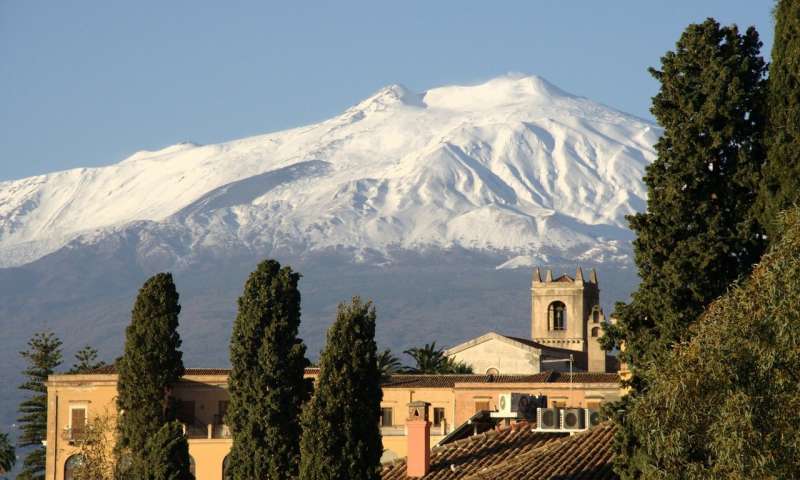At https://phys.org/print441599802.html … did high sea levels in the Mediterranean create the iconic shape of Mount Etna? A study by Iain Stewart of Plymouth University has explored changes in the volcano from 130,000 years ago. It changed from a fissure type of shield volcano which came to an end around 130,000 years ago – the last interglacial period. Instead, it became an inland cluster of nested stratovolcanoes driven by a rearrangement of major faults. At the point of change there seems to have been very high sea levels in the Mediterranean and Etna was submerged. Stewart's theory is that changes in the level of the Mediterranean caused changes to Etna – on several occasions. He thinks that over a period of several thousands of years, the fault system changed its behaviour, sealing up old lave flows and forcing them to emerge elsewhere.
 … The sea level rise is associated by Stewart with the onset of the Eemian interglacial episode – caused by the melting ice of the previous Ice Age. Funnily enough, the end of the recent glacial is associated with low sea levels in the Mediterranean.
… The sea level rise is associated by Stewart with the onset of the Eemian interglacial episode – caused by the melting ice of the previous Ice Age. Funnily enough, the end of the recent glacial is associated with low sea levels in the Mediterranean.
At https://phys.org/print441521717.html … we know that around one million years ago, possibly two million years ago, the North China craton became active. It triggered thinning and replacement of the lithospheric mantle in what is thought to be a shallow crust zone. An article published in Science China Earth Sciences by Jianping Zheng claims subduction and retreating of the Pacific plate could be responsible for the replacement episode – and shallow coupled basin-mountain formation in the North China Craton. External factors include subduction of the surrounding plates and a resultant upwelling along the inter plate weak zone (or fault boundary).
Cratons are actually ancient bits of continent with cold, buoyant, rigid and thick lithosphere and should be able to remain stable for billions of years. Yet the North China Craton experienced major crustal deformation, considerable magmatism, widespread metallogenesis, basin formation and changes in the lithosphere, which seems somewhat odd. Prior to the mid Jurassic the craton was affected by syn-collisional compression – and post collision extension at fault margins, basins, and magmatism. These led to a chemical modification of the destruction of the craton margin. Since the early Cretaceous the de-cratonisation was characterised by lithospheric thinning and the destruction of detachment accompanied by evidence of upwelling. I wonder that the earth expansionists would make of that – subduction or stretching?
